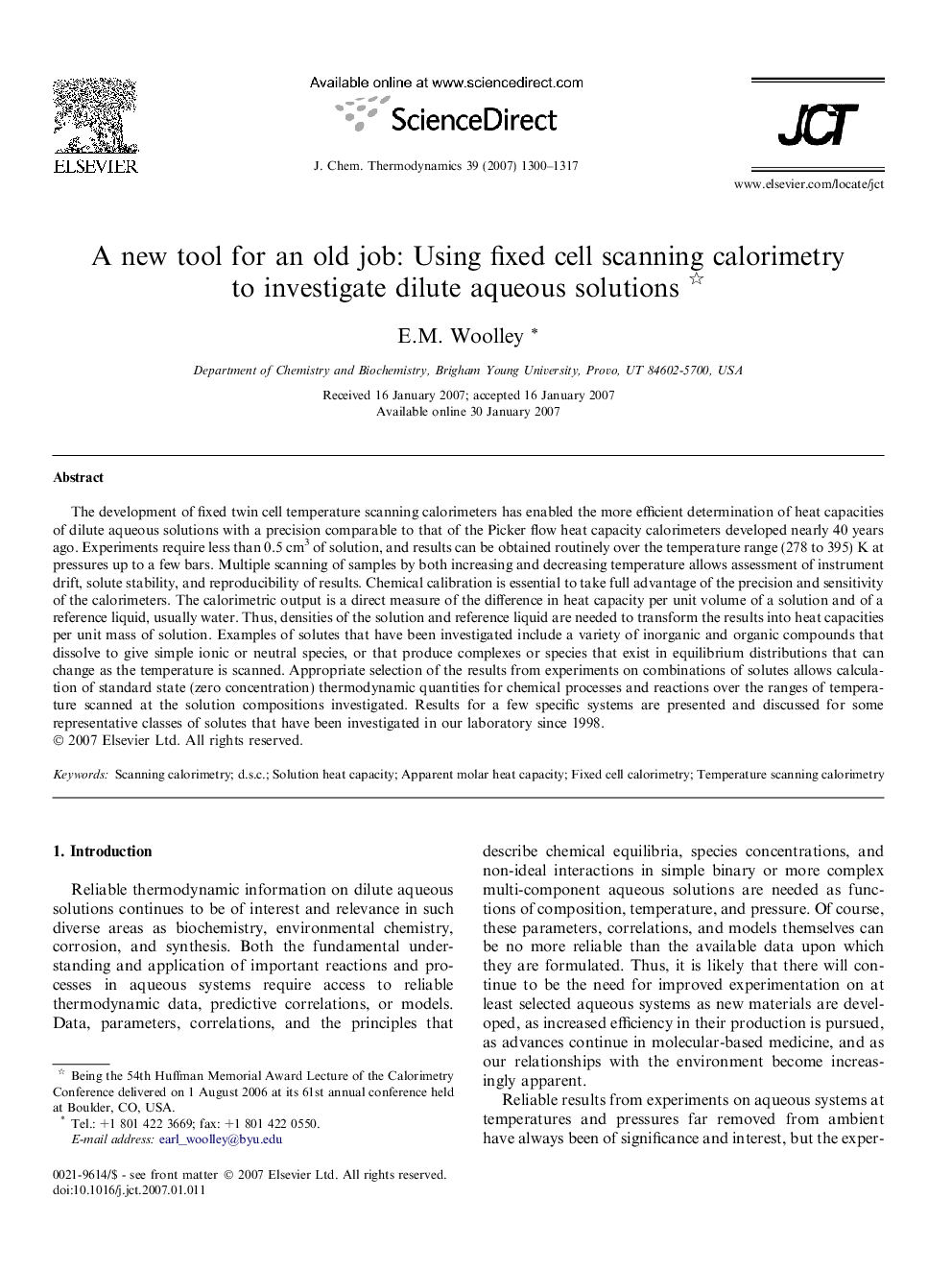| کد مقاله | کد نشریه | سال انتشار | مقاله انگلیسی | نسخه تمام متن |
|---|---|---|---|---|
| 217242 | 1426321 | 2007 | 18 صفحه PDF | دانلود رایگان |

The development of fixed twin cell temperature scanning calorimeters has enabled the more efficient determination of heat capacities of dilute aqueous solutions with a precision comparable to that of the Picker flow heat capacity calorimeters developed nearly 40 years ago. Experiments require less than 0.5 cm3 of solution, and results can be obtained routinely over the temperature range (278 to 395) K at pressures up to a few bars. Multiple scanning of samples by both increasing and decreasing temperature allows assessment of instrument drift, solute stability, and reproducibility of results. Chemical calibration is essential to take full advantage of the precision and sensitivity of the calorimeters. The calorimetric output is a direct measure of the difference in heat capacity per unit volume of a solution and of a reference liquid, usually water. Thus, densities of the solution and reference liquid are needed to transform the results into heat capacities per unit mass of solution. Examples of solutes that have been investigated include a variety of inorganic and organic compounds that dissolve to give simple ionic or neutral species, or that produce complexes or species that exist in equilibrium distributions that can change as the temperature is scanned. Appropriate selection of the results from experiments on combinations of solutes allows calculation of standard state (zero concentration) thermodynamic quantities for chemical processes and reactions over the ranges of temperature scanned at the solution compositions investigated. Results for a few specific systems are presented and discussed for some representative classes of solutes that have been investigated in our laboratory since 1998.
Journal: The Journal of Chemical Thermodynamics - Volume 39, Issue 9, September 2007, Pages 1300–1317